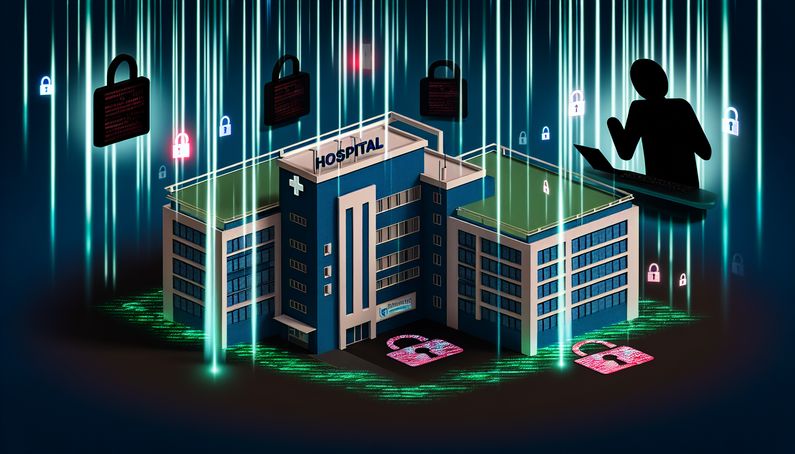
Esse Health Cyberattack: A Wake-Up Call for Healthcare Cybersecurity
The recent cyberattack on Esse Health highlights the vulnerabilities that healthcare providers face in safeguarding sensitive patient data. On April 21, 2025, cybercriminals infiltrated Esse Health’s network, compromising the personal information of over 263,000 patients. This breach not only disrupted essential services but also exposed the healthcare provider to significant reputational damage. The attackers accessed a wide range of sensitive data, including personal and health insurance information, though crucially, social security numbers remained secure (BleepingComputer). The incident underscores the critical need for robust cybersecurity measures in the healthcare sector, where the stakes are particularly high due to the sensitive nature of the data involved.
Cyberattack Timeline and Initial Response
The cyberattack on Esse Health occurred on April 21, 2025, when a cybercriminal gained unauthorized access to the healthcare provider’s network. This breach was significant, affecting over 263,000 patients (BleepingComputer). The attackers managed to infiltrate the network and access sensitive data, which led to a comprehensive investigation by Esse Health to assess the extent of the breach.
The organization became aware of the breach after the attackers disrupted several primary patient-facing network systems and the phone systems. This disruption was a critical indicator of the breach, prompting Esse Health to take immediate action to secure their systems and begin the recovery process. The affected systems were not fully operational again until June 2, 2025, when Esse Health updated its website to inform patients that all regular communication channels, including text messages, phone calls, and the patient portal, were restored.
Nature of the Data Compromised
The investigation revealed that the attackers had stolen a wide range of sensitive data from the compromised network. The stolen data included personal information such as names, addresses, and dates of birth, as well as health insurance information, medical record numbers, patient account numbers, and some health information (BleepingComputer). However, it is important to note that there was no evidence of social security numbers being stolen, and the NextGen electronic medical record system remained secure and was not breached.
This breach highlights just how risky it can be when sensitive data is exposed. Affected individuals face potential risks, including identity theft and fraud. Esse Health advised all affected patients to review their account statements and monitor their credit reports for any suspicious activity that could be linked to the breach.
Investigation and Findings
Following the breach, Esse Health conducted a thorough investigation to determine the full scope of the incident. This investigation was time-intensive, involving a detailed review of the files accessed by the cybercriminals to identify the types of data involved and the individuals affected. The investigation confirmed that the data breach impacted 263,601 individuals, and each affected patient received a breach notification letter from Esse Health’s privacy officer, Jaime L. Bremerkamp (BleepingComputer).
The investigation also suggested that the nature of the attack was likely a ransomware attack. In a ransomware attack, cybercriminals encrypt the victim’s data and demand a ransom for the decryption keys. Although no ransomware operation has claimed responsibility for the breach, the extended period required to restore the affected systems indicates that some systems were encrypted by the attackers after they stole the data. This finding aligns with the typical modus operandi of ransomware attacks.
Mitigation and Support for Affected Patients
In response to the breach, Esse Health implemented several measures to mitigate the impact on affected patients and prevent future incidents. One of the key steps taken was offering free identity protection services through IDX, a data breach and recovery services provider. Affected individuals were encouraged to enroll in these services by September 25, 2025, to receive assistance in monitoring their credit and protecting against identity theft (BleepingComputer).
Additionally, Esse Health enhanced its cybersecurity protocols and conducted a comprehensive review of its security measures to strengthen its defenses against future attacks. These efforts included updating security software, implementing more robust access controls, and providing additional training to staff on cybersecurity best practices.
Communication and Transparency
Throughout the incident, Esse Health maintained a commitment to transparency and communication with its patients. The organization promptly notified affected individuals of the breach and provided them with detailed information about the nature of the data compromised and the steps being taken to address the situation. This proactive approach helped to reassure patients and demonstrate Esse Health’s dedication to safeguarding their personal and health information.
Moreover, Esse Health kept the public informed by updating its website with the latest information on the breach and the recovery efforts. This transparency was crucial in maintaining trust with patients and the broader community, as it demonstrated the organization’s accountability and willingness to address the breach openly.
In summary, the data breach incident at Esse Health was a significant cybersecurity event that affected over 263,000 patients. The organization’s swift response, thorough investigation, and commitment to transparency played a vital role in mitigating the impact of the breach and rebuilding trust with its patients.
Final Thoughts
The Esse Health data breach serves as a stark reminder of the persistent threats facing the healthcare industry. Despite the challenges, Esse Health’s response—marked by transparency and swift action—demonstrates a commitment to patient trust and data security. By offering identity protection services and enhancing cybersecurity protocols, Esse Health has taken significant steps to mitigate the impact of the breach and prevent future incidents. This proactive approach, coupled with ongoing communication efforts, is essential in rebuilding trust and ensuring the safety of patient data (BleepingComputer).
Looking ahead, emerging technologies like AI and IoT could further impact healthcare cybersecurity. While these technologies offer great potential for improving healthcare services, they also introduce new vulnerabilities that must be addressed to protect sensitive patient data.
References
- BleepingComputer. (2025). Esse Health says recent data breach affects over 263,000 patients. https://www.bleepingcomputer.com/news/security/esse-health-says-recent-data-breach-affects-over-263-000-patients/



